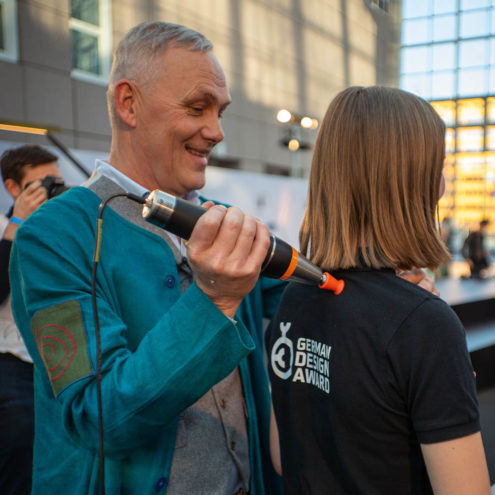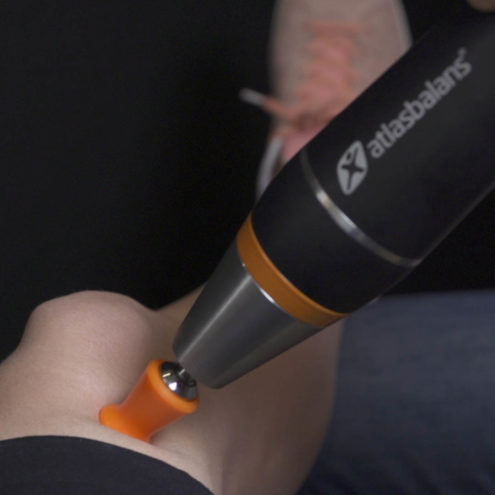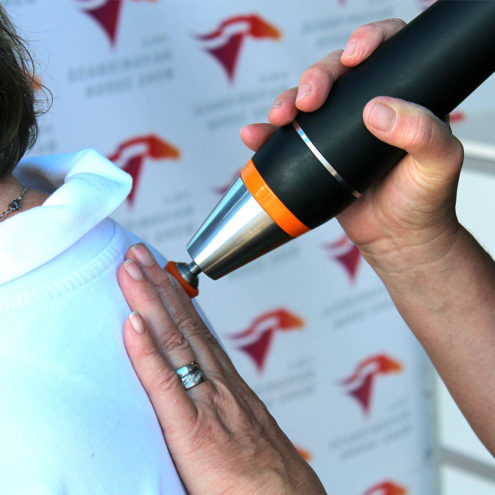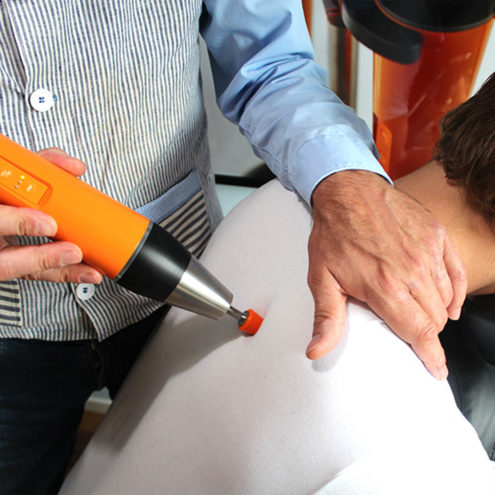Infraspinatus: Anatomy and Function

What is infraspinatus?
Description of the infraspinatus muscle and its location on the scapula
The infraspinatus is an important muscle belonging to the rotator cuff, a group of four muscles that surround and stabilize the shoulder joint. It is located on the back of the scapula in a depression called the infraspinatus fossa. The muscle extends from this depression and attaches to the upper part of the humerus, specifically to the greater tuberosity. It is a flat, triangular muscle that plays a central role in the function and stability of the shoulder.
The function of the infraspinatus and its role in movement and stabilization of the shoulder joint
The infraspinatus is one of the main muscles responsible for outward rotation of the shoulder joint. It also helps stabilize the shoulder by holding the head of the humerus in place in the scapula. This is particularly important during lifting and throwing activities where the shoulder joint is exposed to high forces. Without a well-functioning infraspinatus muscle, the risk of instability and injury to the shoulder joint would increase significantly.
Anatomical features of the infraspinatus
Origin and attachment of the infraspinatus muscle in the scapula and humerus
The infraspinatus muscle originates in the infraspinatus fossa of the scapula. Its fibers extend laterally and pass into a stout tendon that attaches to the large tubercle of the humerus. This attachment is crucial for the muscle’s ability to perform external rotation and stabilization of the shoulder joint. The location and attachment points of the tendon also make it prone to injury, especially during repetitive movements or overexertion.
Range of motion enabled by the infraspinatus muscle
The infraspinatus muscle contributes to several important movements of the shoulder joint. In addition to external rotation, it helps with horizontal abduction, extension and stabilization during dynamic activities. These functions are essential for many sporting and everyday activities, such as throwing a ball or lifting objects overhead. The function and range of motion of the muscle is complemented by the other muscles of the rotator cuff to provide optimal movement and stability of the shoulder joint.
Common problems and injuries with infraspinatus
Overloading or inflammation of the infraspinatus muscle, such as tendinopathy or tendinitis
Overuse of the infraspinatus muscle can lead to inflammation and pain, often called tendinopathy or tendinitis. This is common in people who perform repetitive overhead movements, such as swimmers, tennis players and craftsmen. Symptoms include pain and stiffness in the shoulder, especially with outward rotation or lifting. Untreated tendinopathy can lead to chronic problems and impaired function of the shoulder joint.
Injury to the infraspinatus muscle from trauma or overuse, such as muscle rupture or tears
The infraspinatus muscle can also suffer acute injuries, such as partial or complete rupture. These injuries often occur during sudden movements or trauma, such as when a person falls and is caught with an outstretched arm. Symptoms of a rupture include acute pain, swelling, and reduced mobility. In severe cases, there may also be muscle spasms and bruising around the shoulder.
Treatment of infraspinatus-related problems
Rest and avoidance of activities that may irritate the injured muscle
To treat infraspinatus-related problems, the first step is often rest and avoidance of activities that could aggravate the injury. This includes avoiding repetitive movements above the level of the head and giving the muscle time to heal. Rest can be combined with the use of ice to reduce swelling and pain in the acute stage.
Physiotherapy to strengthen and rehabilitate the infraspinatus muscle and improve shoulder mobility
Physiotherapy is an important part of rehabilitation to restore function and strength to the infraspinatus muscle. A physiotherapist can design a specific exercise program that includes stretching, strength training and proprioception training. The aim is to improve muscle strength, flexibility and stability of the shoulder joint to prevent future injury.
Anti-inflammatory medication or injections to relieve pain and inflammation if needed
If necessary, anti-inflammatory medications, such as NSAIDs, can be used to relieve pain and inflammation. In more severe cases, corticosteroid injections can be given to reduce inflammation and allow for faster recovery. It is important that these treatments are carried out under medical supervision to avoid side effects and ensure that they are used safely.
Understanding the anatomy and function of the infraspinatus muscle, as well as common problems and treatment strategies, can help manage and prevent shoulder injuries. If you are experiencing problems with the infraspinatus or other shoulder conditions, Fascia Clinics can help you with tailored treatment programs focused on holistic care and functional recovery. Visit fasciaklinikerna.se for more information on how we can support your health and recovery.
 Search
Search


































